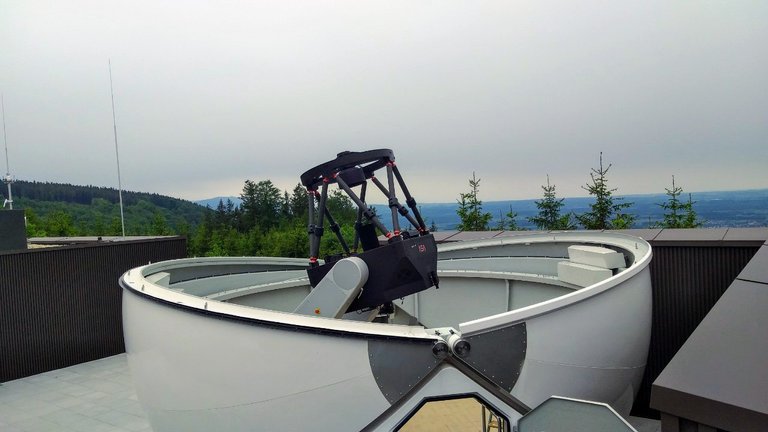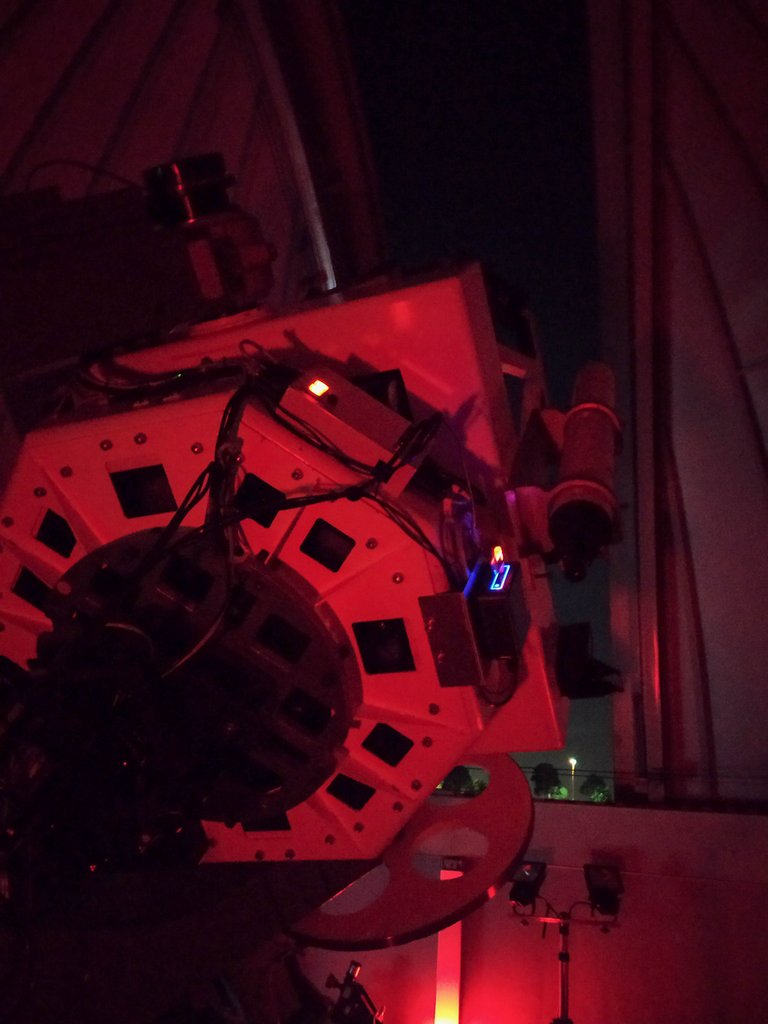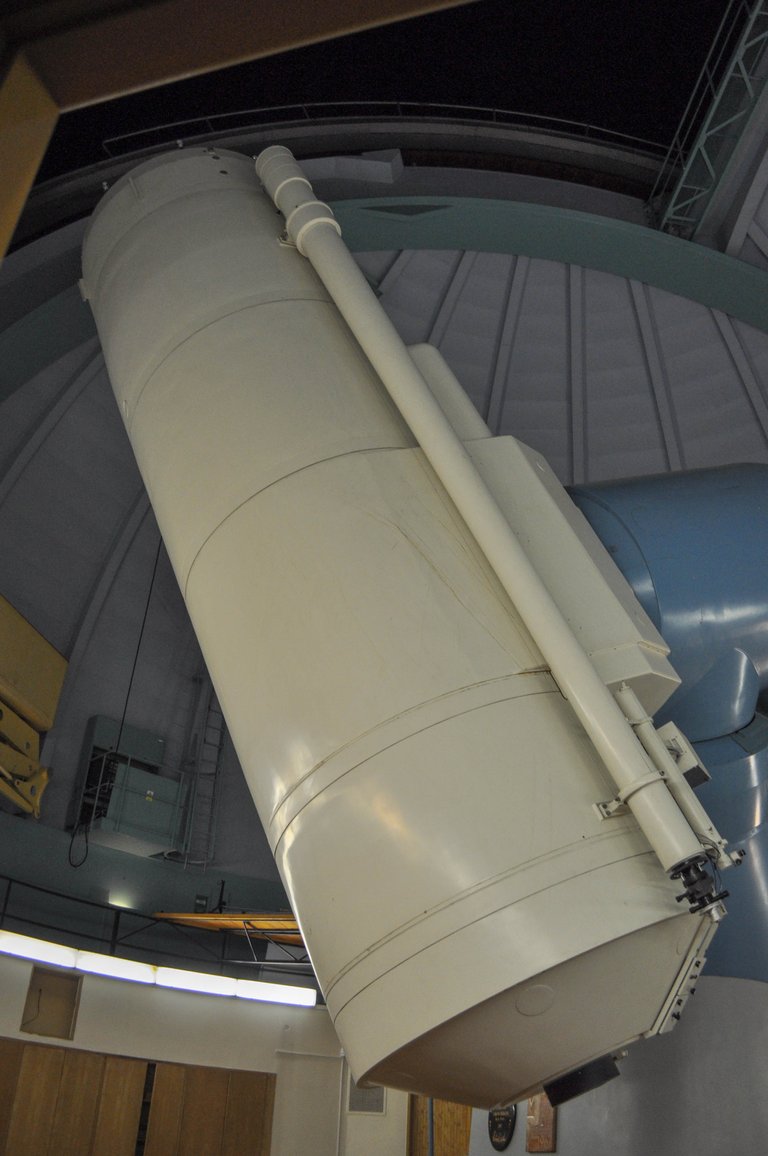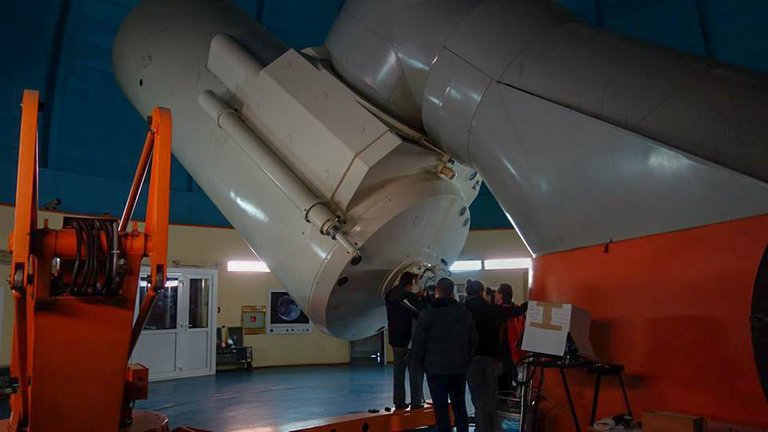Hello, hello! Is there anybody out there?

The other day I promised you some fancy photos from space, but first, let's see the masterpieces of engineering that capture these images. Photos in this post are from observatory I visited and worked one.
What do you need to know about modern-day telescopes? Usually, they have 2 mirrors, Primary and secondary, these are curved, and most used ones have primary as a paraboloid and the secondary as hyperboloid. You an check out the scheme for easier understanding, of course, there are various technical details, but we won't go into that here - unless you really want to know - then I'll make another post :). BASIC function of a telescope is to gather as much light as possible from one object and put it into a single point - receiver, either our eye(Professional astronomers don't really look with the naked eye), spectrograph or CCD camera.
I will start with the smallest one, 60cm telescope located in Western Sydney, Australia.

60 cm telescope means that its primary mirror has 60cm in diameter, and then there is a secondary mirror located at the exact distance to get the focal point on the desired place and use the best out of geometrical optics.

Next one on the list is 1m telescope in Salzburg, Austria - they produce some high-quality telescopes and mirroring systems.

Anyways, you see the mirror with 1m diameter requires a much larger body than just 1m of tubes, since it must have solid construction, so the bars don't wrench, and everything breaks apart.
Now we are entering into the medium size category, 2m telescopes, and if you thought that these baby boys were big, check these out!

This 2m telescope in Ondrejov Observatory, located near Prague in the Czech Republic. This one does not have an eyepiece, meaning only possible to record with CCD camera, but nothing you have seen in the modern days DSLR/Mirrorless stuff. These cameras are pretty small, and this one is cooled down with liquid nitrogen to -40 degrees to get the best data we can.

The last one is from Bulgaria Rozhen Observatory - they managed to get the funding, and not to shut the observatory a few years ago. Anyways just for comparison of the size, there are some humans looking through the eyepiece - really raw image of space.
Keep in mind that everything on sky moves - and we use automatic trackers - meaning that this construction must be so stable and focused on the object, and yet move throughout the observation night.
One of the projects I'm currently working on has got observing time in Chile, and hopefully, I will manage to get myself a ticket and actually visit the VLT telescope which is an interferometer (4 telescopes with 8.2m mirrors working together) - that is the beast and one of my scientific dreams.
Anyways, that's all for now, in the upcoming days there will be some images of space and more talk about the other type of telescopes and astronomy. If you have any questions, feedback, what you would like to know just ask, and if you like it don't be shy to show it in any way.
All photos are mine ©svemirac.

Thanks for stopping by.
Svemirac out!
That looks like most kids dreams right there getting to use a giant telescope. So many childhood memories of using whatever consumer grade kid telescope I had. Look at the moon or anything else and it was more or less just a blurry image! Still the power to gaze into the heavens at night and catch different events going on was always fun. I don’t stargaze like I use to and only sometimes look up at the sky during a comet event.
Quite cool stuff though. I use to have this little chart of the night sky and try to find the constellations.
Hey! Last Friday I was looking through the 60cm telescope here at Venus and the Moon during the day. Venus is well nothing special, still too far away and small, especially cause it was day. But the moon, oh my... it was so big, nad you know white-ish in front of the blue sky - 100% scene from Star Wars or some other sci-fi movie where you can see a giant planet in the daylight. DAMN!
YES! I remember my first time playing with very bad room-telescope all blurry and inverted... and the revelation with military binoculars. :D
I'm finding it difficult to get any constellation here, everything is strange and the Orion is upside-down. :D
Fun nevertheless, and both comets and meteor showers are awesome - with comets being much more interesting :)
Anyways, most of the times nowadays I can only see stuff on the PC :) I'm trying to go every other saturday to the observatory and work during the public nights, and I have a plan to start playing with some spectrograph that is available (just for fun). :)
I'm still here @svemirac ! Good to see you starting to work with some big guns :) If there is something I would recommend anyone interested in space/astronomy should do is visit a large observatory (often they have organised tours). Talking about that one my "bucket list" is to visit Mauna Kea Observatory in Hawaii.
Glad to see you here too. :)
Oh yes! Keck twins are awesome! If I ever get there for some work, I'll send you an invitation :)
I would love to be able to visit one of those observatories one day, in the sense of seeing these instruments with my own eyes :)
Nice pics by the way! :)
Hello there, thanks. :)
If you ever happen to be in Sydney in the next 2/3 years, let me know and we can organize something. :) It might be nothing fancy but it is still a thing of wonder.
Glad to see you back and active an all fronts! :)
Didn't you find anyone using those giant telescopes?
Thanks for the interesting information.
Not yet, and trust me these are the small ones. the optical ones go up to 10m in diameter. While radio ones (there will be some photo of them too) are built up to 300m at Arecibo or that Chinese one with 500m. But usually, nowadays we make lots of smaller ones (about 15-20m) - but radio dish does not need to be so precise as an optical mirror.
WOW
I'm interested in astronomy, but it didn't pushed me any further than installing Star chart ∞ on my phone.
Looking forward to your photos and information.
Cool tools! I too am reminded of the consumer grade telescope I received as a gift some decades ago. The moon was quite easy to catch, but homing in on a star was hard and it was easy to lose it with the slightest adjustment of the telescope's fixation.
Yeah, planets are still fine to watch. If it is a decent telescope. :)
And seeing all stripe on Jupiter is amazing!
Awesome photos. These really give a great sense of the scale of these scopes. Are all scopes cooled with liquid nitrogen or does it depend on the camera?
This post has been voted on by the SteemSTEM curation team and voting trail. It is elligible for support from @curie.
If you appreciate the work we are doing, then consider supporting our witness stem.witness. Additional witness support to the curie witness would be appreciated as well.
For additional information please join us on the SteemSTEM discord and to get to know the rest of the community!
Please consider setting @steemstem as a beneficiary to your post to get a stronger support.
Please consider using the steemstem.io app to get a stronger support.
You got a 31.06% upvote from @ocdb courtesy of @svemirac! :)
@ocdb is a non-profit bidbot for whitelisted Steemians, current max bid is 40 SBD and the equivalent amount in STEEM.
Check our website https://thegoodwhales.io/ for the whitelist, queue and delegation info. Join our Discord channel for more information.
If you like what @ocd does, consider voting for ocd-witness through SteemConnect or on the Steemit Witnesses page. :)